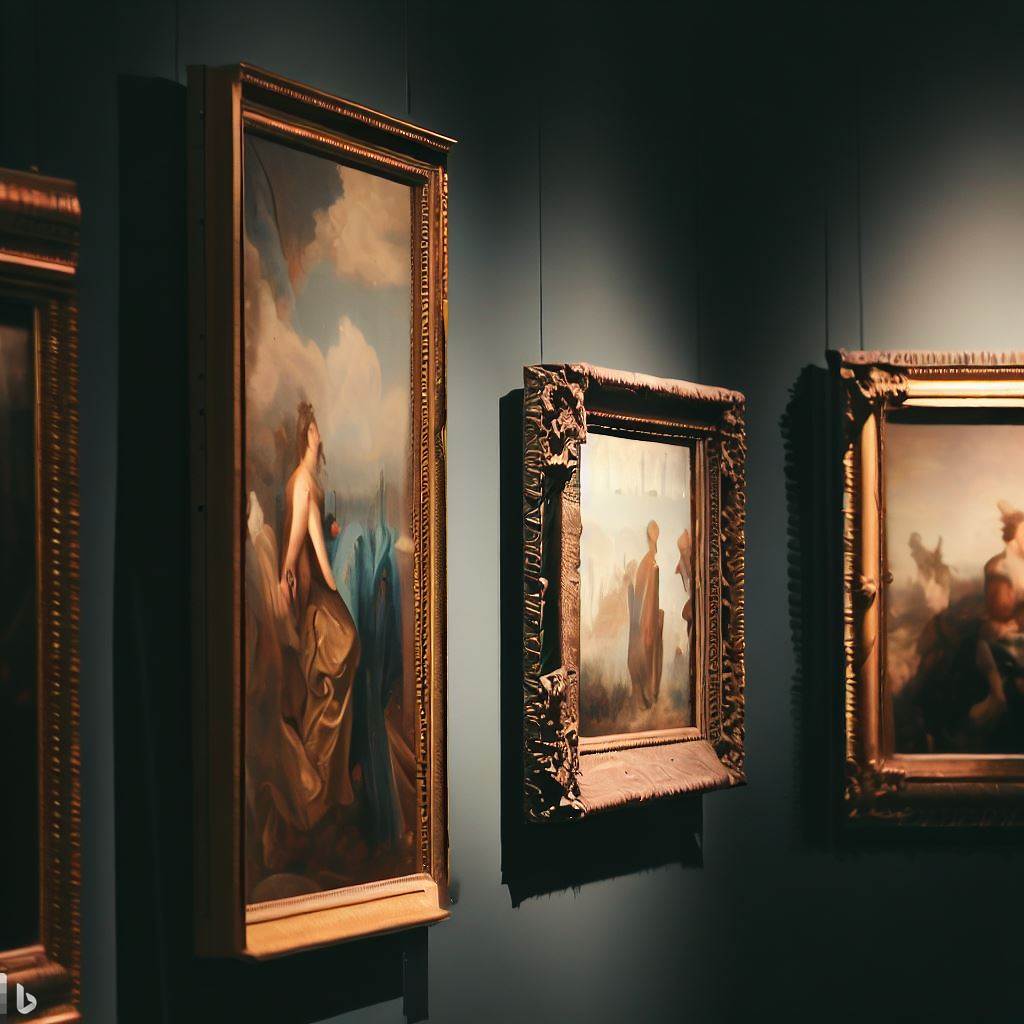
Art and literature have always shared a deep, intertwined relationship. Each medium can profoundly inspire the other, creating enduring works of beauty, expression, and human experience. Below, we explore seven masterpieces that drew inspiration from classic literature, showcasing the transcendent connection between these two forms of art:
- “Ophelia” by John Everett Millais – This painting was inspired by the tragic figure of Ophelia from William Shakespeare‘s “Hamlet”. Millais’ work is renowned for its intricate detail and the poignant portrayal of Ophelia’s final moments. It captures the surreal tranquility of her death as she floats amidst the flowers in a stream.
- “The Lady of Shalott” by John William Waterhouse – This painting was inspired by Alfred, Lord Tennyson’s poem of the same name. The Lady of Shalott, trapped by a curse, can only view the world through a mirror’s reflection until she is driven to look directly upon Sir Lancelot, bringing about her doom. Waterhouse’s interpretation beautifully captures her tragic plight.
- “The Nightmare” by Henry Fuseli – This piece was not inspired by one particular work of literature, but rather the broad strokes of gothic horror that found its footing in literature. Fuseli’s work evokes the nightmarish landscapes of stories penned by the likes of Edgar Allan Poe or Mary Shelley.
- “The Garden of Earthly Delights” by Hieronymus Bosch – This triptych was largely inspired by biblical narratives, particularly the book of Genesis. The three panels respectively depict the creation of man, the frolicking of mankind before the Fall, and the torments of Hell, taking viewers on a visual journey from paradise to damnation.
- “The Fall of Icarus” by Pieter Bruegel the Elder – This painting draws from the Greek myth of Icarus, who flew too close to the sun and plunged into the sea. It’s a profound meditation on human ambition and the often-ignored tragedy in the face of everyday life, represented by the indifferent shepherd and fisherman.
- “The Last Day of Pompeii” by Karl Bryullov – This grand historical painting was inspired by Edward Bulwer-Lytton’s novel, “The Last Days of Pompeii”. Bryullov captures the chaos and terror of the catastrophic eruption of Mount Vesuvius in 79 AD, immortalizing the historical event with dramatic force.
- “Ulysses Deriding Polyphemus” by J.M.W. Turner – Turner was inspired by Homer’s epic, “The Odyssey”. This painting depicts the moment when the hero Ulysses escapes from the Cyclops Polyphemus. Turner’s innovative use of light is especially notable in this painting, underscoring the triumphant defiance of Ulysses.
These masterpieces stand as a testament to the timeless power of storytelling and its ability to cross over into other artistic mediums. They celebrate the symbiotic relationship between art and literature, demonstrating how one can elevate and enrich the other.
Here’s an FAQ section that complements the above article on classic literature-inspired art.
FAQs
1. Q: What inspired John Everett Millais’ painting “Ophelia”? A: Millais’ “Ophelia” was inspired by the character Ophelia from William Shakespeare’s play “Hamlet”.
2. Q: Who is the “Lady of Shalott”, and where does her story come from? A: The Lady of Shalott is a character from a poem of the same name by Alfred, Lord Tennyson. Her tragic tale was depicted in a painting by John William Waterhouse.
3. Q: Is “The Nightmare” by Henry Fuseli based on a specific work of literature? A: While “The Nightmare” does not draw directly from a specific literary piece, it embodies the spirit of Gothic horror, a genre well-represented in literature by authors such as Edgar Allan Poe and Mary Shelley.
4. Q: Which literary work influenced Hieronymus Bosch’s “The Garden of Earthly Delights”? A: “The Garden of Earthly Delights” draws inspiration from biblical narratives, particularly the book of Genesis.
5. Q: Is the story of Icarus in Pieter Bruegel the Elder’s painting a myth or a historical event? A: The story of Icarus, depicted in Bruegel’s painting, is a Greek myth. Icarus is known for his fatal attempt to fly too close to the sun with wings made of feathers and wax.
6. Q: What historical event is portrayed in “The Last Day of Pompeii” by Karl Bryullov? A: Bryullov’s “The Last Day of Pompeii” depicts the eruption of Mount Vesuvius in 79 AD, an event also described in Edward Bulwer-Lytton’s novel, “The Last Days of Pompeii”.
7. Q: Which epic inspired J.M.W. Turner’s “Ulysses Deriding Polyphemus”? A: Turner’s “Ulysses Deriding Polyphemus” was inspired by Homer’s “The Odyssey”. The painting depicts the hero Ulysses as he escapes from the Cyclops Polyphemus.
8. Q: What is the significance of these masterpieces being inspired by classic literature? A: These works highlight the close relationship between art and literature. They demonstrate how stories can transcend mediums, inspiring artists to create visual representations of narratives, thereby enriching our understanding of both written and visual narratives.